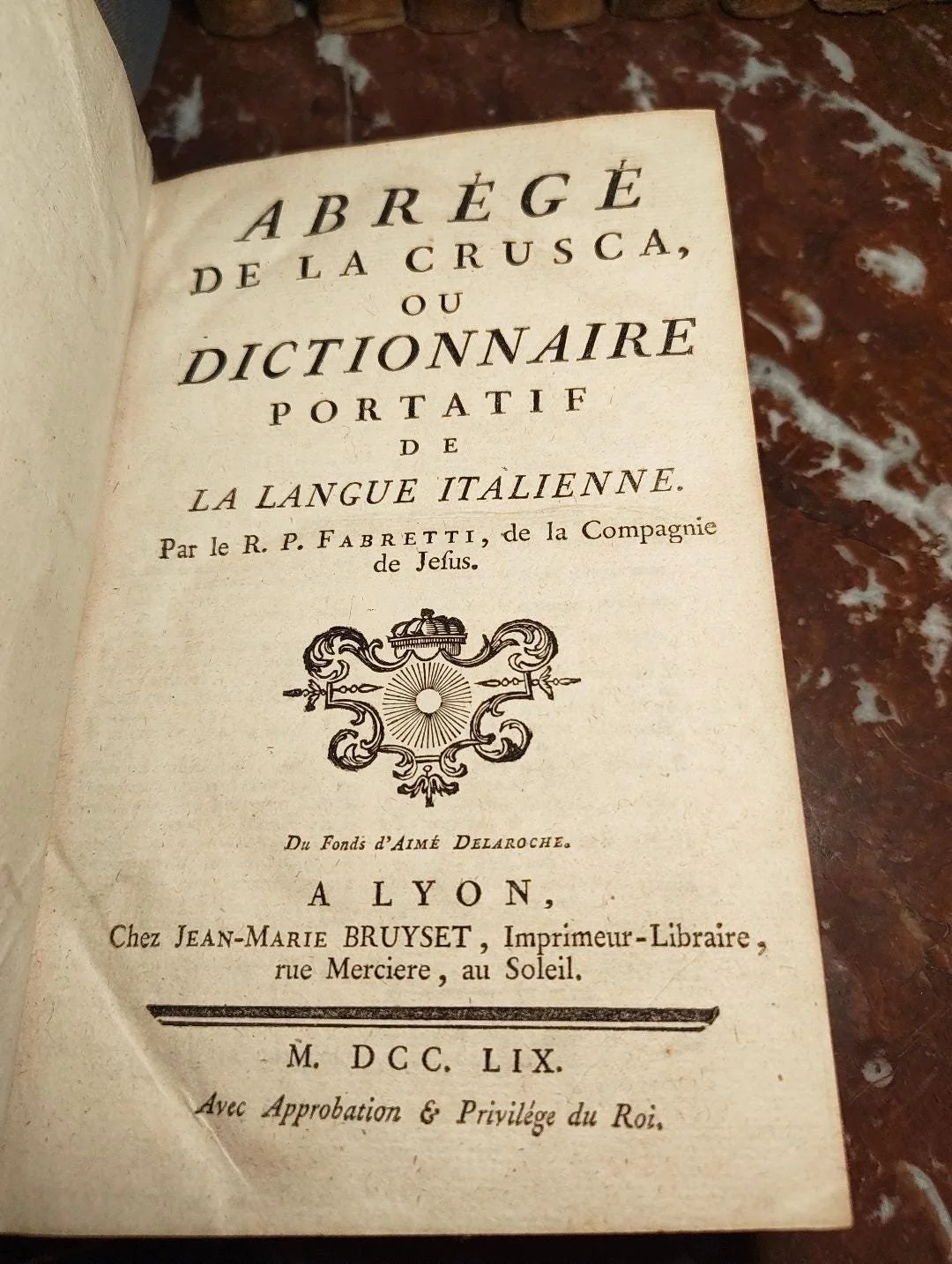 Image 1 of 7
Image 1 of 7

 Image 2 of 7
Image 2 of 7

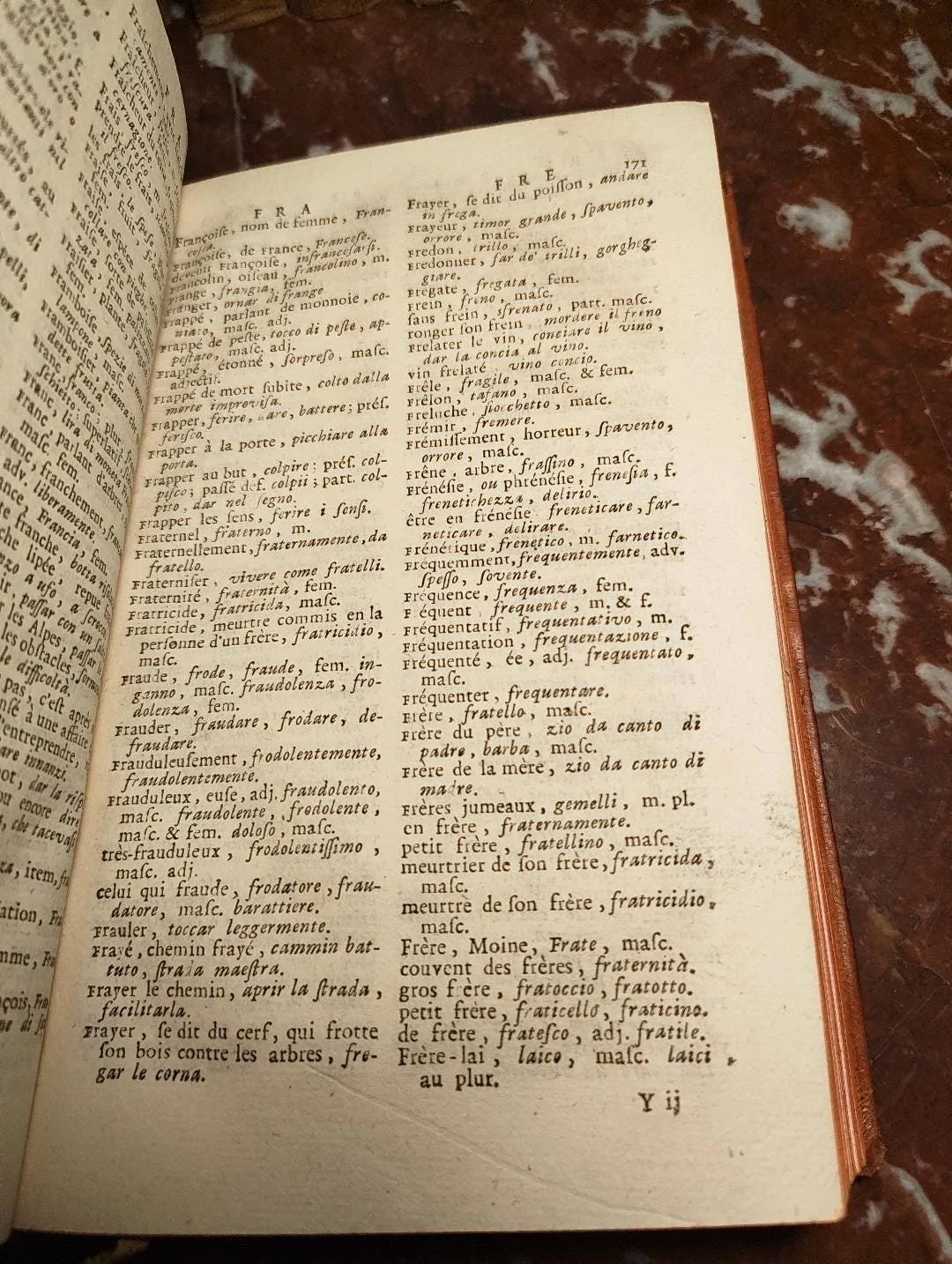 Image 3 of 7
Image 3 of 7

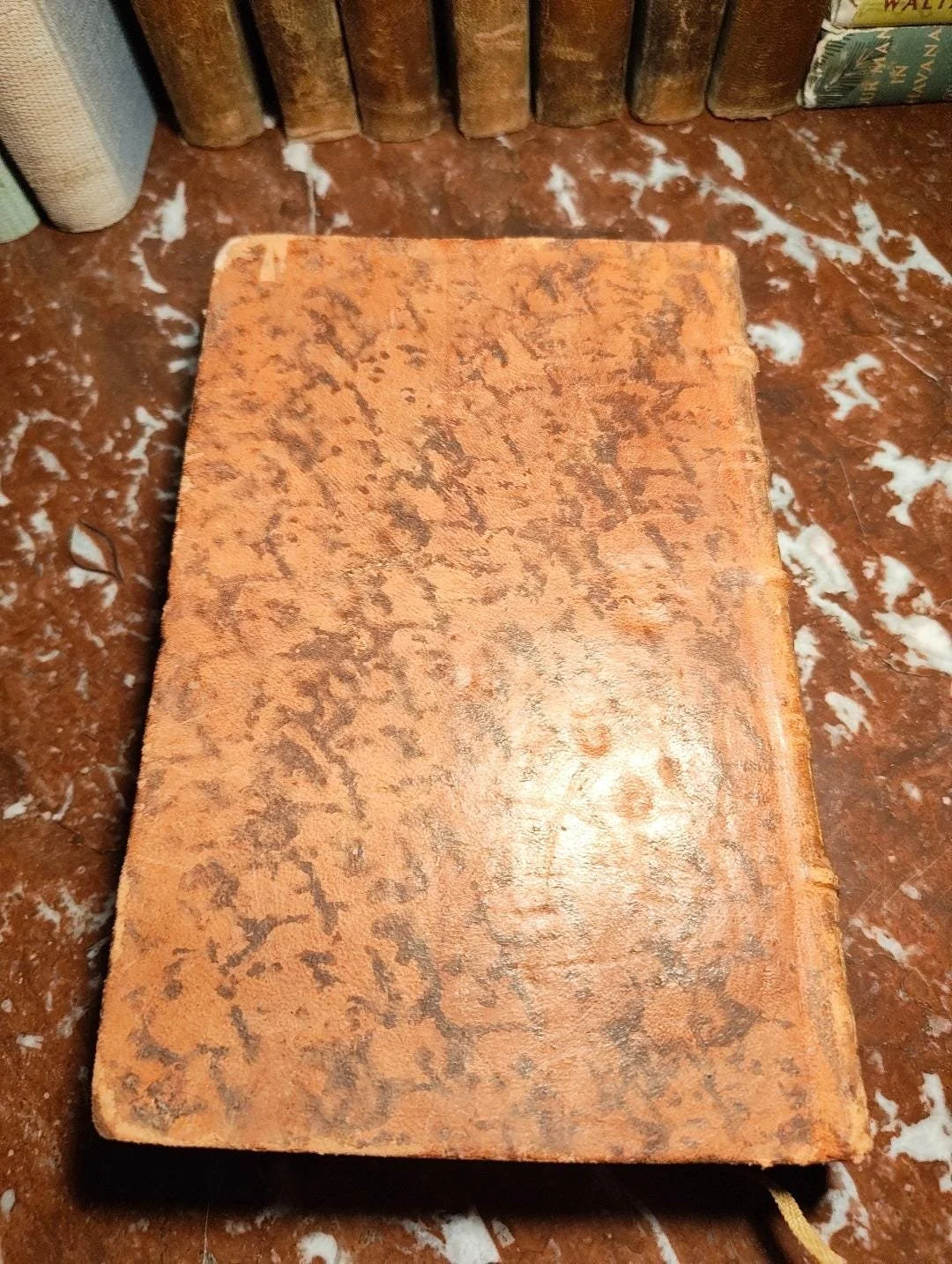 Image 4 of 7
Image 4 of 7

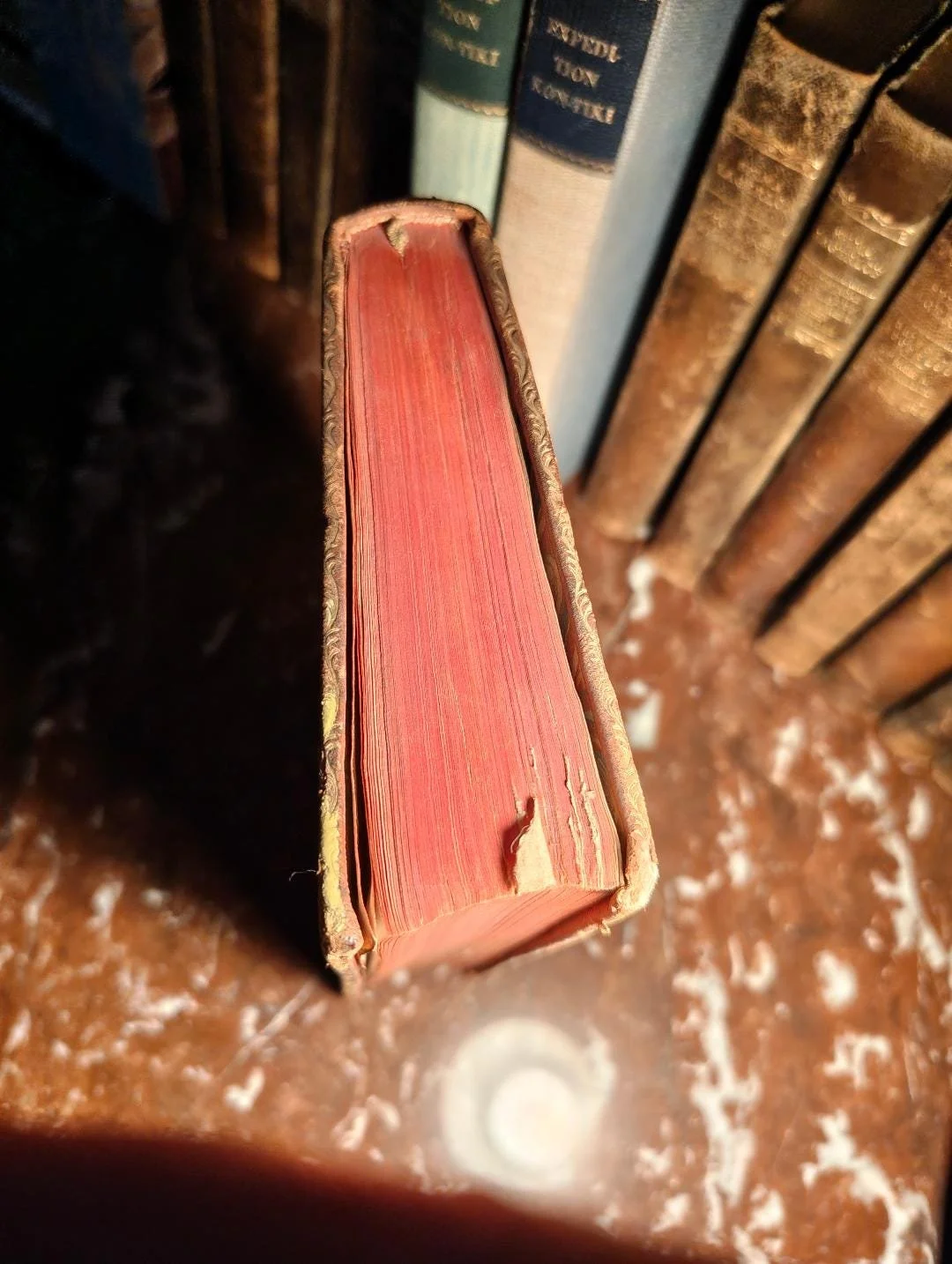 Image 5 of 7
Image 5 of 7

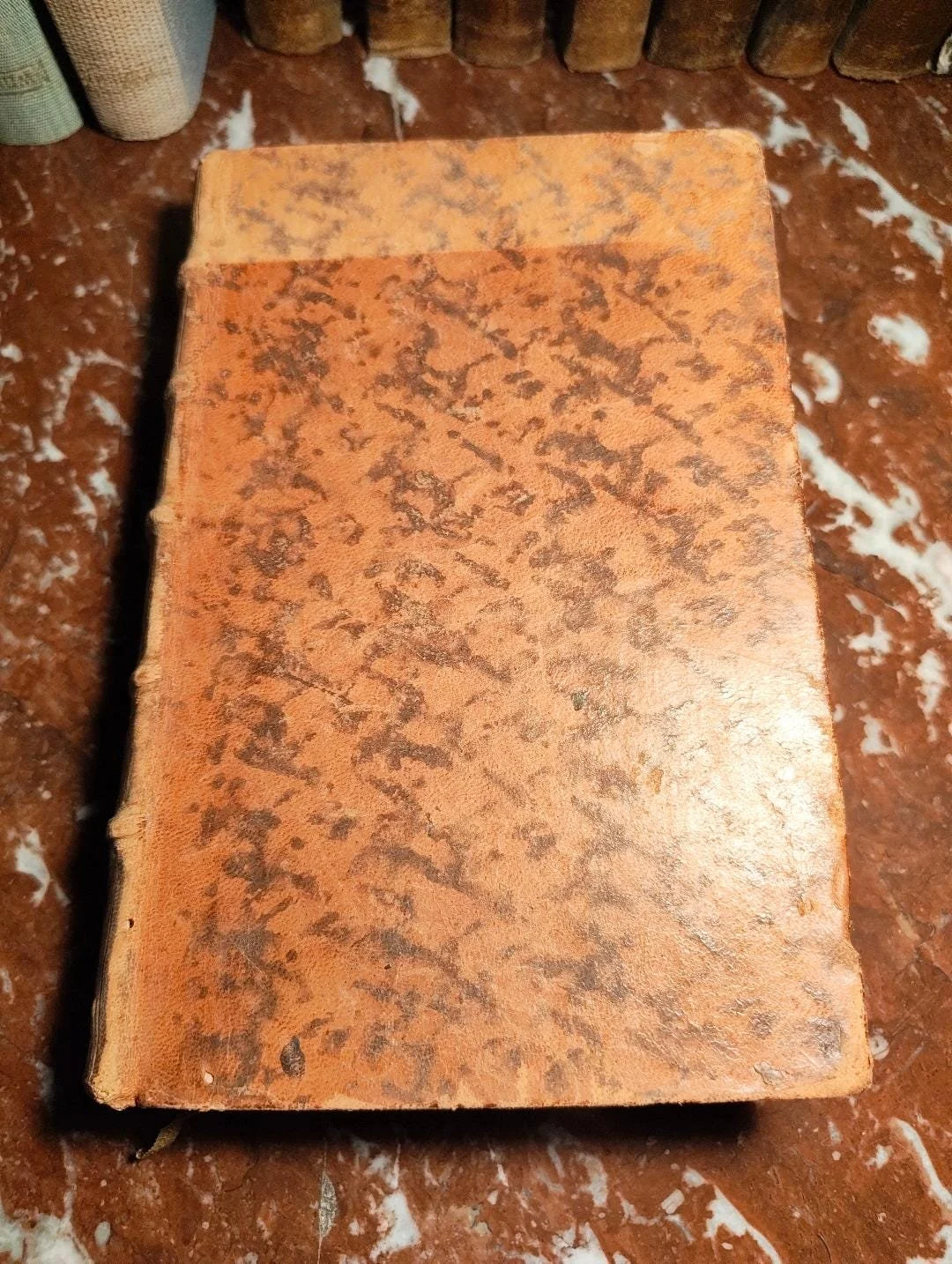 Image 6 of 7
Image 6 of 7

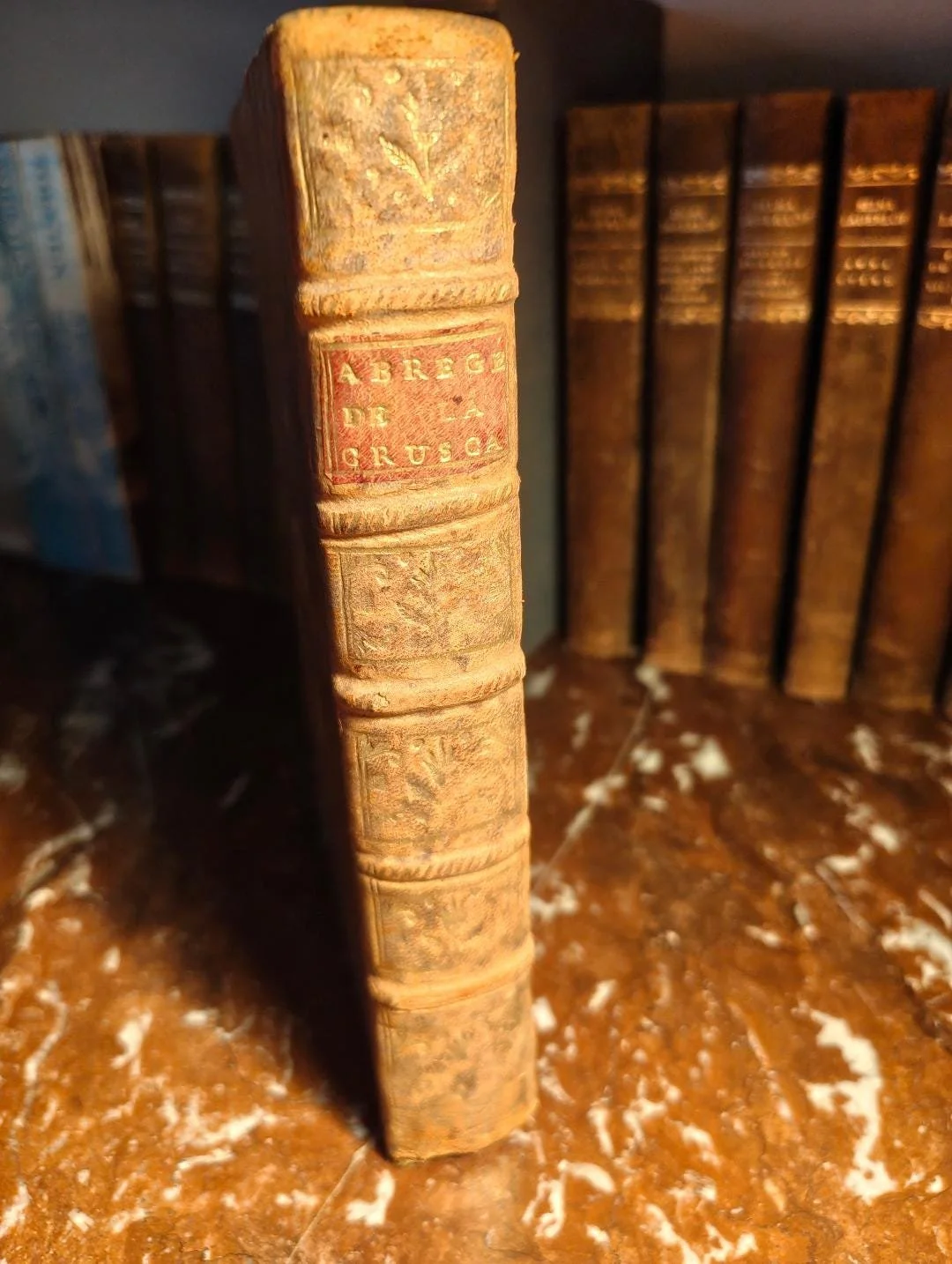 Image 7 of 7
Image 7 of 7








Abrégé de la Crusca. Lyon, Jean Marie Bruyset, 1759. Contemporary Full Leather
An Enlightenment era portable dictionary shaped by Italian philology and French intellectual culture
This 1759 Lyon printing of Abrégé de la Crusca offers a distilled and highly portable version of the monumental dictionary of the Accademia della Crusca, the institution responsible for defining and preserving the purity of the Italian language. First published in 1612, the Crusca dictionary shaped linguistic scholarship across Europe. This eighteenth century abridgment opened its essential vocabulary to a wider audience of scholars, diplomats, and readers who required a manageable and travel ready reference work.
Issued by the prominent Lyon printer Jean Marie Bruyset and produced with royal privilege, the volume reflects both the scholarly ambition and the regulatory framework of mid eighteenth century French printing. Works of this type occupied a central place within Enlightenment culture, where the study of languages was understood as part of a broader project of knowledge, comparison, and cultural refinement. The combination of Italian entries and French explanations demonstrates how linguistic scholarship moved fluidly across borders and intellectual communities.
The book is preserved in its contemporary full leather binding with gilt decoration on the spine and marbled paper on the boards. The leather shows the softened wear characteristic of a well used yet carefully kept eighteenth century volume, including rubbing and surface marks. The interior is clean and complete with gentle toning that adds to its historical character. The structure remains sound and the impression of the type is sharp.
As an artefact, the dictionary stands at the intersection of philology, Enlightenment scholarship, and the evolution of portable reference works. It offers insight into how eighteenth century readers engaged with the Italian language and how the intellectual prestige of the Crusca extended far beyond Italy. For collectors of linguistic history, early dictionaries, and French printed works, this is a notable and attractive example.
An Enlightenment era portable dictionary shaped by Italian philology and French intellectual culture
This 1759 Lyon printing of Abrégé de la Crusca offers a distilled and highly portable version of the monumental dictionary of the Accademia della Crusca, the institution responsible for defining and preserving the purity of the Italian language. First published in 1612, the Crusca dictionary shaped linguistic scholarship across Europe. This eighteenth century abridgment opened its essential vocabulary to a wider audience of scholars, diplomats, and readers who required a manageable and travel ready reference work.
Issued by the prominent Lyon printer Jean Marie Bruyset and produced with royal privilege, the volume reflects both the scholarly ambition and the regulatory framework of mid eighteenth century French printing. Works of this type occupied a central place within Enlightenment culture, where the study of languages was understood as part of a broader project of knowledge, comparison, and cultural refinement. The combination of Italian entries and French explanations demonstrates how linguistic scholarship moved fluidly across borders and intellectual communities.
The book is preserved in its contemporary full leather binding with gilt decoration on the spine and marbled paper on the boards. The leather shows the softened wear characteristic of a well used yet carefully kept eighteenth century volume, including rubbing and surface marks. The interior is clean and complete with gentle toning that adds to its historical character. The structure remains sound and the impression of the type is sharp.
As an artefact, the dictionary stands at the intersection of philology, Enlightenment scholarship, and the evolution of portable reference works. It offers insight into how eighteenth century readers engaged with the Italian language and how the intellectual prestige of the Crusca extended far beyond Italy. For collectors of linguistic history, early dictionaries, and French printed works, this is a notable and attractive example.

